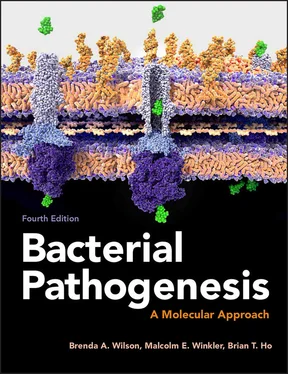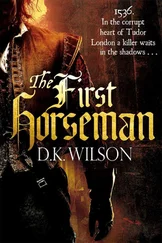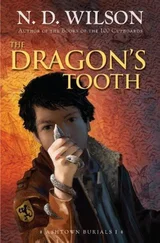Answers to Comic Relief:
19. Try complements.
20. Phago-sightseer.
4
IN THIS CHAPTER
The Specialists: Adapting to a Particular Pathogen Challenge
B Cells: Producers of Antibodies
The Humoral (Antibody) Immune Response
Characteristics of Antibodies and Their Diverse Roles in Preventing Infection
Serum Antibodies
Secretory Antibodies: Antibodies That Protect Mucosal Surfaces
Pathogen and Toxin Neutralization by Antibodies
Affinity and Avidity
Cytotoxic T Cells, Also Known as Cytotoxic T Lymphocytes (CTLs)
Cytotoxic T Lymphocytes: Critical Defense against Intracellular Pathogens
Antigen Presentation to the Immune System
Processing of Protein Antigens by Dendritic Cells
Interaction between APCs and T Cells: The T-Cell-Dependent Response
Th-(Th1/Th2/Th17)-Cell-Mediated Immunity
Production of Antibodies by B Cells
Links between the Innate and Adaptive Defense Systems
T-Cell-Independent Antibody Responses
Mucosal Immunity: IgA/sIgA Antibodies
Development of the Adaptive Immune System from Infancy to Adulthood
Adaptive Defense Systems in Nonmammals
The Dark Side of the Adaptive Defenses: Autoimmune Disease
Selected Readings
Questions
Solving Problems in Bacterial Pathogenesis
CHAPTER 4
The Adaptive Defenses
ANTIBODIES AND CYTOTOXIC T CELLS
If ordinary police are confronted with a dangerous situation that they are unable to resolve, they call in the SWAT (special weapons and tactics) team, specialists such as snipers and hostage negotiators, who are trained to target and deal with a specific crisis. When the innate immune system is faced with a prolonged bacterial attack that it cannot handle, the human body uses a similar strategy. It brings in the specialists: antibody-producing B cells and cytotoxic T cells, also called cytotoxic T lymphocytes (CTLs), that are designed to target and kill a specific invading microbe.
The Specialists: Adapting to a Particular Pathogen Challenge
The innate defenses of the body are normally an effective protective force that eliminates invading microbes. Unfortunately, some microbes have developed strategies for evading these innate defenses and surviving in the host. For example, some microbes are able to resist phagocytosis by neutrophils, while others are even able to survive and multiply within phagocytic cells once ingested. To cope with these microbes, the body has evolved a second defense system, the adaptive or acquired immune response, which enables the host to recognize specific pathogens and mount a targeted response against them. In this adaptive immune response, dendritic cells (DCs) internalize the foreign substances that are then processed into smaller pieces and presented on their cell surface to T helper (Th) cells. The Th cells in turn stimulate B cells to produce antibodies that specifically recognize the foreign substance, targeting it for opsonization by phagocytes. The Th cells also stimulate cytotoxic T lymphocytes (CTLs) that recognize and kill infected host cells.
Unlike the innate immune system, which mounts a generalized response against foreign invaders, the adaptive immune system involves specialized cells of the body that change or adapt to target individual invaders in a highly specific way. As such, the adaptive response takes time to adjust and fully develop its specific response, taking up to a week to appear on the scene in full force. However, upon subsequent encounters with the same invader, the specific defenses appear much more rapidly, needing only a day or two to respond. In terms of disease manifestation, this usually means that during the first encounter with a new pathogen the body may have to struggle to overcome the infection and may exhibit symptoms of disease. But, upon future exposure to the same pathogen, the body is prepared to rapidly eliminate the threat and can combat the infection much faster than it did the first time around. Vaccination, which will be covered in greater detail in chapter 17, is a strategy for priming the body with an adaptive immune response against a particular pathogen so as to launch this more rapid response without actually having to endure the first, more unpleasant, encounter.
Understanding how the components of the adaptive immune system are induced and how they protect the body from infection is important for understanding how vaccines work, how they are designed, and why different vaccines are administered in different ways. Although vaccines have been important in preventing disease, the yield of successful vaccines has been disappointingly small. This is due to the fact that scientists are only now beginning to understand certain important nuances of the adaptive immune response, such as autoimmunity, a condition in which the adaptive immune system begins producing an unwanted immune response directed against the host’s own body. In this way, just as the innate immune system has its dark side (septic shock) that we discussed in the previous chapter, the adaptive immune system also has its own dark side (autoimmune reactions). Obviously, it is important that vaccines do not evoke this dark side. New insights into how the adaptive immune response develops, together with new insights into how to better deliver vaccines, are beginning to break down some of the barriers that have prevented development of vaccines and other treatment strategies against diseases such as AIDS, gonorrhea, chlamydial disease, tuberculosis, and malaria, which are serious causes of morbidity and mortality throughout the world.
In this chapter, we start with a description of two of the main products of an adaptive immune response, antibodies and cytotoxic T cells. We will then delve into the complex series of steps that produce these defenses. Finally, we will discuss how the body is able to “remember” past encounters with particular pathogens so as to more rapidly mount an effective immune response upon subsequent attacks by those pathogens.
B Cells: Producers of Antibodies
The Humoral (Antibody) Immune Response
Antibodies are immunoglobulin (Ig) protein complexes produced by mature B lymphocytes (B cells). Humoral immunity refers to the production of antibodies by mature B cells, as well as complement, antimicrobial peptides, and other immune components found in body fluids (archaically called the “humors”), but here we will confine the term to mean primarily the antibody response. Humoral immunity involves activation of naïve B cells through one of two pathways. The first pathway is a T-cell-dependent process, which is followed by clonal expansion and proliferation of the activated mature B cells and their terminal differentiation into plasma cells (mature, nonproliferating B cells that act as professional antibody-producing factories). Alternatively, T-cell-independent activation of B cells can occur through direct binding of highly repetitive structures on their surfaces, which leads to proliferation, maturation, and production of antibodies. Antibodies generated through this T-cell-independent pathway tend to have lower affinity for their targets than those generated through the T-cell-dependent activation of B cells.
Antibodies are found in blood (serum) and tissue fluids, as well as many bodily secretions (e.g., saliva, mucosal fluids, vaginal fluids, and breast milk). Antibodies carry out a number of the adaptive immune system’s critical tasks, including: binding and neutralizing the activities of foreign substances, such as toxins, bacteria, and other pathogens; coating foreign substances for enhanced opsonization and clearance from the body; and targeting infected host cells for the killing action of cytotoxic T cells (CTLs) and natural killer (NK) cells. To understand how different antibodies perform such diverse tasks, it is first necessary to understand how each type of antibody is put together and how they work.
Читать дальше












